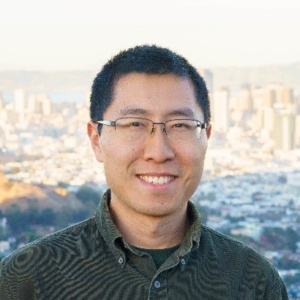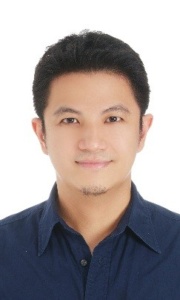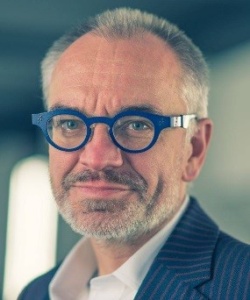VLSI Circuits Short Courses – 2
- Home
- VLSI Circuits Short Courses – 2
Monday, June 18, 2018 – Bio-Sensors, Circuits, & Systems for Wearable and Implantable Medical Devices
Scope:
This short course covers recent developments in healthcare and wellness monitoring, focusing on circuits and systems solutions.
Short Course:
Abstract: Compact and convenient healthcare systems made of CMOS IC are opening the low cost ubiquitous healthcare services. IoT healthcare systems, such as portable, wearable and implantable systems, and their circuits and systems are introduced. The CMOS circuits for the sensor read-out, ADC, ultra-low power platform, and wireless communication will be explained about their roles in healthcare systems. The packaging technology, especially wearable forms, is important for user’s convenience. Fabric will be used extensively as the system integration substrate, and a new integration scheme by which the CMOS ICs will be directly bonded on the flexible substrate, will be introduced. Circuits and systems including Bandage type body signal monitors, Sleep monitoring system, Smart Acupuncture systems, Electrical Impedance Tomography and Mental Healthcare Systems, will be explained. In addition, The KAIST Dr. M, the total mobile healthcare solution will be introduced as an example of IoT Healthcare.
Disease diagnosis and prediction accuracy can be dramatically increased by utilizing DNN (Deep Neural Network). Glucose monitoring and anesthesia depth monitoring with DNN will be introduced as examples of DNN application to enhance the monitoring accuracy. In addition, deep learning hardware solution implementing together with CNN (Convolutional Neural Network) and RNN (Recurrent Neural Network) will be introduced. The AI hardware can be utilized for image based disease diagnosis, for example, cancer detection.
 Hoi-Jun Yoo (M’95 – SM’04 – F’08) graduated from the Electronic Department of Seoul National University, Seoul, Korea, in 1983 and received the M.S. and Ph.D. degrees in electrical engineering from the Korea Advanced Institute of Science and Technology (KAIST), Daejeon, in 1985 and 1988, respectively.
Hoi-Jun Yoo (M’95 – SM’04 – F’08) graduated from the Electronic Department of Seoul National University, Seoul, Korea, in 1983 and received the M.S. and Ph.D. degrees in electrical engineering from the Korea Advanced Institute of Science and Technology (KAIST), Daejeon, in 1985 and 1988, respectively.
Since 1998, he has been the faculty of the Department of Electrical Engineering at KAIST and now is a full professor. From 2001 to 2005, he was the director of Korean System Integration and IP Authoring Research Center (SIPAC). From 2003 to 2005, he was the full time Advisor to Minister of Korea Ministry of Information and Communication and National Project Manager for SoC and Computer. In 2007, he founded System Design Innovation & Application Research Center (SDIA) at KAIST. Since 2010, he has served the general chair of Korean Institute of Next Generation Computing. His current interests are computer vision SoC, body area networks, biomedical devices and circuits. He is a co-author of DRAM Design (Korea: Hongrung, 1996), High Performance DRAM (Korea: Sigma, 1999), Future Memory: FRAM (Korea: Sigma, 2000), Networks on Chips (Morgan Kaufmann, 2006), Low-Power NoC for High-Performance SoC Design (CRC Press, 2008), Circuits at the Nanoscale (CRC Press, 2009), Embedded Memories for Nano-Scale VLSIs (Springer, 2009), Mobile 3D Graphics SoC from Algorithm to Chip (Wiley, 2010), Bio-Medical CMOS ICs (Springer, 2011), Embedded Systems (Wiley, 2012), and Ultra-Low-Power Short-Range Radios (Springer, 2015).
Dr. Yoo received the Electronic Industrial Association of Korea Award for his contribution to DRAM technology in 1994, Hynix Development Award in 1995, the Korea Semiconductor Industry Association Award in 2002, Best Research of KAIST Award in 2007, Scientist/Engineer of this month Award from Ministry of Education, Science and Technology of Korea in 2010, Best Scholarship Awards of KAIST in 2011, and Order of Service Merit from Ministry of Public Administration and Security of Korea in 2011 and has been co-recipients of ASP-DAC Design Award 2001, Outstanding Design Awards of 2005, 2006, 2007, 2010, 2011, 2014 A-SSCC, Student Design Contest Award of 2007, 2008, 2010, 2011 DAC/ISSCC. He has served as a member of the executive committee of ISSCC, Symposium on VLSI, and A-SSCC and the TPC chair of the A-SSCC 2008 and ISWC 2010, IEEE Fellow, IEEE Distinguished Lecturer (’10-’11), Far East Chair of ISSCC (‘11-‘12), Technology Direction Sub-Committee Chair of ISSCC (’13), TPC Vice Chair of ISSCC (’14), and TPC Chair of ISSCC (’15).
Abstract: Passively capturing health data is critical to the success of continuous care platforms and clinical research. Wearables are often seen as a convenient tool for this purpose. However, most commercial offerings lead to compromises between user experience and data quality. To address this, Verily Study Watch, an investigational medical device, was designed for scalable collections of rich and high quality datasets while providing a seamless user experience. This talk discusses the design process and the sensor development of Verily Study Watch, as well as our takeaways from the feedback that we have received from study participants, researchers, and clinicians.
 David Ha received the B.A.Sc. degree in electrical engineering from the University of Toronto, Canada in 2005, and the S.M. and the Ph.D. degrees in electrical engineering from the Massachusetts Institute of Technology, USA in 2008 and 2013, respectively. David was a co-founder at Quanttus, Inc., where he worked on sensing cardiovascular signals using wearables. Currently, he is a technical lead at Verily Life Sciences (formerly Google Life Sciences). David was named to MIT Technology Review’s 35 Innovators Under 35 in 2014 and Forbes’ 30 Under 30 in 2015.
David Ha received the B.A.Sc. degree in electrical engineering from the University of Toronto, Canada in 2005, and the S.M. and the Ph.D. degrees in electrical engineering from the Massachusetts Institute of Technology, USA in 2008 and 2013, respectively. David was a co-founder at Quanttus, Inc., where he worked on sensing cardiovascular signals using wearables. Currently, he is a technical lead at Verily Life Sciences (formerly Google Life Sciences). David was named to MIT Technology Review’s 35 Innovators Under 35 in 2014 and Forbes’ 30 Under 30 in 2015.
Abstract: The emergence of wearable devices and the popularity of mobile phones open up a substantial opportunity to detect biosignals in a more convenient manner with instant feedback. However, as the biosignals are conventionally collected in medical organizations and well-controlled environments, the biosignal acquisition using consumer electronics inevitably suffers from unmanageable environmental interferences together with huge motion artifacts caused by daily activities. On top of that, the consideration for the device’s industrial design and form factor further constrains the design of sensing units and the location on the body available for signal detection. These issues significantly degrade the signal quality and need to be tackled with both system and circuit approaches to achieve sufficient signal-to-noise ratio for further analysis. This presentation will introduce the design of the analog front end from the viewpoint of system requirements in consumer electronics, including the circuits and systems for photoplethysmography (PPG), Electrocardiography (ECG), and Bio-impedance (BioZ) acquisition, as well as the ADC designs for these commonly used biosensors in consumer electronics.
 Yun-Shiang Shu is the Technical Deputy Director of Analog Design and Circuit Technology at MediaTek Inc., Hsinchu, Taiwan. He currently leads the development of analog front ends for biomedical and IOT applications and has delivered MediaTek’s first biosensor product. Prior to his current role, he developed the ADC prototype for the 2G/3G/4G mobile phones in MediaTek. Dr. Shu received the B.S. and M.S. degrees in electrical engineering from National Taiwan University, Taipei, Taiwan, and the Ph.D. degree in electrical and computer engineering from University of California at San Diego. He is the first author of more than 10 technical papers published in JSSC, ISSCC, VLSI Symp., and CICC, covering ADC designs for mobile communication, wireless/wireline connectivity, as well as sensor readout interface. He has served as a Technical Program Committee member of the Symposium on VLSI Circuits during 2013-2017 and currently serves on the Technical Program Committee for ISSCC.
Yun-Shiang Shu is the Technical Deputy Director of Analog Design and Circuit Technology at MediaTek Inc., Hsinchu, Taiwan. He currently leads the development of analog front ends for biomedical and IOT applications and has delivered MediaTek’s first biosensor product. Prior to his current role, he developed the ADC prototype for the 2G/3G/4G mobile phones in MediaTek. Dr. Shu received the B.S. and M.S. degrees in electrical engineering from National Taiwan University, Taipei, Taiwan, and the Ph.D. degree in electrical and computer engineering from University of California at San Diego. He is the first author of more than 10 technical papers published in JSSC, ISSCC, VLSI Symp., and CICC, covering ADC designs for mobile communication, wireless/wireline connectivity, as well as sensor readout interface. He has served as a Technical Program Committee member of the Symposium on VLSI Circuits during 2013-2017 and currently serves on the Technical Program Committee for ISSCC.
Abstract: Smart healthcare is gradually shifting its focus from symptomatic diagnostics and therapy to disease prevention and asymptomatic disease interception. While disease prevention mainly focuses on stimulating (healthy) behavior and behavior change, disease interception implies capturing a disease before the first symptoms occur and developing therapies applicable in such an early stage of the disease process. It is expected that both prevention and disease interception will need personal digital phenotyping – the use of digital and wearable technology to track health parameters and behavior over an extended period of time so as to identify risk factors and triggers.
This presentation will give an overview of imec innovations in the field of patient management, prevention and disease interception, combining hardware innovations and analytics innovations. Our connected health R&D has focused on developing highly-comfortable, medical-grade wireless solutions for the diagnosis and management of cardiovascular, neurological and cardiopulmonary disorders. We also create system-on-chip solutions that combine a wide range of on-chip electrophysiological sensor readouts with sensor fusion, powerful signal processing, memory, power management, connectivity. These solutions are tested in investigational studies on patients with congestive heart failure, sleep apnea, chronic kidney disease, hypertension and rhythm disorders. While providing accurate diagnosis and efficient treatment tools addresses a very important need for the foreseeable future, we have also set up an R&D program on prevention and disease interception which we term ‘imec.ichange’. In this data-driven health R&D activity, digital phenotyping is one of the key ingredients. To achieve a lasting behavior change, we need to go beyond motivation and focus on people’s personal ability to change by providing personal triggers. This can be accomplished by accurately, unobtrusively and securely tracking a wider range of physiological parameters and by gathering contextual information on our behavior, habits, schedule, location, activity, etc. Combining detailed physiological data and detailed contextual data makes it possible to create an individual digital phenotype. This digital phenotype can then be used to give highly-personalized feedback and suggestions when you are open to act on them. Compared to the generic advice now provided by wearables, this kind of personal feedback provided at the right time is a true paradigm shift for personal coaching and may particularly revolutionize mental health management. To this end, we will elaborate on the specific example of mental stress management. Over the past 3 years, we have carried out a large-scale study where we did measured physiological stress signals, and enriched these with self-reported stress information and smartphone-based contextual information. Wearable technology has made it possible to detect stress outside of the lab, in a real-life context. However, it also comes with new challenges in terms of data quality, and strategies to deal with artifacts and varying signal quality will be explained.
 Chris Van Hoof is Senior Director of Connected Health Solutions at imec in Leuven, Belgium and Eindhoven, the Netherlands and imec Fellow. Chris Van Hoof is also full professor at the University of Leuven. Chris Van Hoof has a track record of 30 years of initiating, executing and leading national and international contract R&D at imec. He is passionate about creating things that really work, and his R&D has resulted in 5 imec startups (4 in the healthcare domain) and he has delivered flight hardware to 2 European Space Agency missions. He has taken wearable health at imec from embryonic research to a business line with leading customers in the medical and consumer space. After a PhD in Electrical Engineering (University of Leuven, 1992), Chris Van Hoof has held positions at imec at manager and director level in diverse technical fields (sensors and imagers, MEMS and autonomous microsystems, wireless sensors, body-area networks). He has published over 700 papers in journals and conference proceedings and given over 100 invited talks.
Chris Van Hoof is Senior Director of Connected Health Solutions at imec in Leuven, Belgium and Eindhoven, the Netherlands and imec Fellow. Chris Van Hoof is also full professor at the University of Leuven. Chris Van Hoof has a track record of 30 years of initiating, executing and leading national and international contract R&D at imec. He is passionate about creating things that really work, and his R&D has resulted in 5 imec startups (4 in the healthcare domain) and he has delivered flight hardware to 2 European Space Agency missions. He has taken wearable health at imec from embryonic research to a business line with leading customers in the medical and consumer space. After a PhD in Electrical Engineering (University of Leuven, 1992), Chris Van Hoof has held positions at imec at manager and director level in diverse technical fields (sensors and imagers, MEMS and autonomous microsystems, wireless sensors, body-area networks). He has published over 700 papers in journals and conference proceedings and given over 100 invited talks.
Abstract: Neural interfaces stand to revolutionize disease care for patients of neurological conditions and in the future, the human experience. For example, neurostimulation devices such as Deep Brain Stimulators have seen widespread adoption in the treatment of Parkinson’s disease with excellent therapeutic outcomes, yet these devices have few channels and provide simple electrical pulses that are programmed by a doctor in a process that can take months or even years. There is a need for low-power, miniaturized systems capable of simultaneous stimulation and recording that will enable devices to treat patients autonomously and in closed-loop in response to a patient’s real-time neural state.
This tutorial will cover the challenges and recent advances in combining neurostimulation with neural recording circuits. We will start by covering the electrode models, and commonly used stimulators and recording circuits. We will then cover the challenges in combining the two subsystems such as the presence of large, persistent stimulation artifacts that distort the signal and obscure reliable biomarker detection. Finally, we will discuss recent circuit techniques that address these challenges and opportunities for realizing truly closed-loop neural interfacing.
 Rikky Muller, PhD is an Assistant Professor of Electrical Engineering and Computer Sciences (EECS) at the University of California, Berkeley. She is Co-director of the Berkeley Wireless Research Center, a Core Member of the Center for Neural Engineering and Prostheses and an Investigator at the Chan-Zuckerberg Biohub. She is also the Co-founder of Cortera Neurotechnologies, Inc. a medical device company founded in 2013 where she previously held positions as CEO and CTO. Her expertise is in the research and commercialization of implantable medical devices and in developing integrated circuits and microsystems for neurological applications.
Rikky Muller, PhD is an Assistant Professor of Electrical Engineering and Computer Sciences (EECS) at the University of California, Berkeley. She is Co-director of the Berkeley Wireless Research Center, a Core Member of the Center for Neural Engineering and Prostheses and an Investigator at the Chan-Zuckerberg Biohub. She is also the Co-founder of Cortera Neurotechnologies, Inc. a medical device company founded in 2013 where she previously held positions as CEO and CTO. Her expertise is in the research and commercialization of implantable medical devices and in developing integrated circuits and microsystems for neurological applications.
Dr. Muller received her BS and MS degrees from MIT and her Ph.D. from UC Berkeley all in EECS. After her graduate studies, she was a McKenzie Fellow and Lecturer of EE at the University of Melbourne in Australia. Prior to her Ph.D. she worked as an IC designer at Analog Devices. Dr. Muller was named one of MIT Technology Review’s top 35 global innovators under the age of 35 (TR35), and one of MedTech Boston’s top 40 healthcare innovators Under 40. She is the recipient of the National Academy of Engineering Gilbreth Lectureship, the Chan-Zuckerberg Biohub Investigatorship, and the Keysight Early Career Professorship.
Dr. Muller is a 2018 guest editor for the IEEE Journal of Solid-State Circuits and a member of the technical program committees for IEEE ISSCC, CICC and BioCAS. She is a member of the IEEE, Solid-State Circuits Society, Women in Circuits and the Society for Neuroscience.
Abstract: Chronic diseases account for over 1/3 of deaths around the world. To mitigate the impact of such diseases, healthcare paradigm is now shifting from reactive illness management towards proactive and preemptive health management; the goal here is to maintain a healthy life in the first place or to prevent illness from getting any worse by continuously monitoring health during normal daily life. Body Area Network (BAN) is an attractive means for continuous and pervasive health monitoring, yet its unique and harsh environment gives circuit designers many challenges. As human body absorbs the majority of RF energy around GHz band, existing RF radio may not be an ideal for communications between and on-body sensors.
In order solve the issues, this short course presents the Body Coupled Communication (BCC)-based BAN. BCC BAN utilizes human body itself as a communication medium, which has orders of magnitude less pathloss when compared to RF-based BAN. The course will begin with body channel characteristics, followed by design considerations and transceiver implementation. Moving on, we will see what points the circuit designers need to consider in such non-conventional environments. Low energy circuit techniques to overcome the limitations will also be discussed. Lastly, we will consider the network topology to form a BAN system and review its various system aspects.
 Jerald Yoo (S’05-M’10-SM’15) received the B.S., M.S., and Ph.D. degrees in Department of Electrical Engineering from the Korea Advanced Institute of Science and Technology (KAIST), Daejeon, Korea, in 2002, 2007, and 2010, respectively.
Jerald Yoo (S’05-M’10-SM’15) received the B.S., M.S., and Ph.D. degrees in Department of Electrical Engineering from the Korea Advanced Institute of Science and Technology (KAIST), Daejeon, Korea, in 2002, 2007, and 2010, respectively.
From 2010 to 2016, he was with the Department of Electrical Engineering and Computer Science, Masdar Institute, Abu Dhabi, United Arab Emirates, where he was an Associate Professor. Since 2017, he has been with the Department of Electrical and Computer Engineering, National University of Singapore, Singapore, where he is currently an Associate Professor. He has pioneered researches on low-energy body-area-network (BAN) transceivers and wearable body sensor network using the planar-fashionable circuit board for continuous health monitoring system. He authored book chapters in Biomedical CMOS ICs (Springer, 2010) and in Enabling the Internet of Things—From Circuits to Networks (Springer, 2017). His current research interests include low-energy circuit technology for wearable bio-signal sensors, flexible circuit board platform, BAN transceivers, ASIC for piezoelectric Micromachined Ultrasonic Transducers (pMUT) and System-on-Chip (SoC) design to system realization for wearable healthcare applications.
Dr. Yoo is the recipient or a co-recipient of several awards: the IEEE International Circuits and Systems (ISCAS) 2015 Best Paper Award (BioCAS Track), ISCAS 2015 Runner-Up Best Student Paper Award, the Masdar Institute Best Research Award in 2015 and the IEEE Asian Solid-State Circuits Conference (A-SSCC) Outstanding Design Awards (2005). He was the Vice Chair of IEEE Solid-State Circuits Society (SSCS) United Arab Emirates (UAE) Chapter. Currently, he serves as a Technical Program Committee Member of the IEEE A-SSCC, IEEE Custom Integrated Circuits Conference (CICC), and the IEEE International Solid-State Circuits Conference (ISSCC) Student Research Preview (SRP). He is also an Analog Signal Processing Technical Committee Member of IEEE Circuits and Systems Society. He is currently serving as an SSCS Distinguished Lecturer.
Abstract: As a step-up from the 200-year-old stethoscope, a point-of-care ultrasound imaging device provides a window into the human body without any ionizing radiation. At the heart of such a device is a highly-integrated semiconductor chip, which is the key enabler of the compact form factor, the high bandwidth for multi-modal versatility, and the low power consumption.
The talk will first introduce the basics of medical ultrasound and ultrasonic beam-formation. After that, analog front-end circuit blocks will be discussed, including their design strategies and challenges in expanding them into a large array. The talk will conclude with a brief overview of the Butterfly iQTM and its Ultrasound-on-ChipTM technology. It is the first FDA cleared, “one probe, whole body imaging” medical ultrasound device, that directly plugs into an iPhone, and at a 50-fold lower price tag than existing solutions.
 Kailiang Chen received the B.S. degree in Electrical Engineering with highest honors from Tsinghua University, Beijing, China, in 2007, and the S.M. and Ph.D. degrees in Electrical Engineering and Computer Science from the Massachusetts Institute of Technology, Cambridge, MA, USA, in 2009 and 2014, respectively. Since 2014, he has been the Analog IC team lead at Butterfly Network, Inc., Guilford, CT, USA, where he led the development of the “ultrasound on a chip” and its integration into the product.
Kailiang Chen received the B.S. degree in Electrical Engineering with highest honors from Tsinghua University, Beijing, China, in 2007, and the S.M. and Ph.D. degrees in Electrical Engineering and Computer Science from the Massachusetts Institute of Technology, Cambridge, MA, USA, in 2009 and 2014, respectively. Since 2014, he has been the Analog IC team lead at Butterfly Network, Inc., Guilford, CT, USA, where he led the development of the “ultrasound on a chip” and its integration into the product.
Abstract: Retinal prosthesis technology is one of the mostly-expected application in which CMOS VLSI technology can play an essential role as the core component of the system. All of the state-of-the-art retinal prosthesis systems have custom-designed CMOS chip that handles complicated two-dimensional electric stimulation on retina.
This talk will be started with basics of the implantable retinal prosthesis technology including stimulation strategy on the retina, required function and typical specifications.
Then, design of individual circuits in the retinal stimulator chip will be discussed. The device structure and packaging will be also described, because the circuit design and packaging are strongly coupled each other in the technology.
Finally, the current status of the retinal prosthesis technology.
 Takashi Tokuda received his B.E. and M.E. degrees in Electronic Engineering from Kyoto University, Kyoto, Japan, in 1993 and 1995, respectively. He received his Ph.D degree in Materials Engineering from Kyoto University in 1998. He had been an assistant professor since 1999 and is currently working as an associate professor since 2008 in the Graduate School of Materials Science, Nara Institute of Science and Technology. He had been a visiting professor in Polytechnique Montreal in 2016-2017. He has been working on Photonic Materials Science and Photonic Device Engineering. His research interests include CMOS image sensors, retinal prosthesis devices, bioimaging sensors, and biosensing devices.
Takashi Tokuda received his B.E. and M.E. degrees in Electronic Engineering from Kyoto University, Kyoto, Japan, in 1993 and 1995, respectively. He received his Ph.D degree in Materials Engineering from Kyoto University in 1998. He had been an assistant professor since 1999 and is currently working as an associate professor since 2008 in the Graduate School of Materials Science, Nara Institute of Science and Technology. He had been a visiting professor in Polytechnique Montreal in 2016-2017. He has been working on Photonic Materials Science and Photonic Device Engineering. His research interests include CMOS image sensors, retinal prosthesis devices, bioimaging sensors, and biosensing devices.
Satellite Workshop
2018 Silicon Nanoelectronics Workshop
will be co-located with the Symposia on Sunday and Monday, June 17-18, 2018 at the Hilton Hawaiian Village.
2018 Spintronics Workshop on LSI
will be co-located with the Symposia at a date to be announced.

